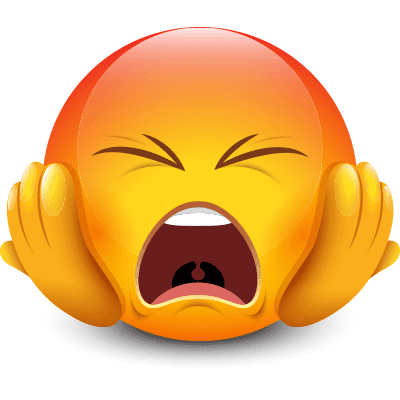


People also used pig emoji, and various stickers, to show opposition to Muslims.
Emoticons for angry face for facebook series#
This aligns with other exploitations of the act of vomiting as a cultural trope to convey xenophobia.įor example, the British television series Little Britain used hyperbolic humour to ridicule the racism of Maggie Blackamoor, one of its characters, by having her vomit every time she ate food made by a non-white person, or met people from different ethnicities. For example, Apple’s family emojis originally excluded depictions of same-sex couples.Ī pig sticker is posted in response to a questions asking if policewomen should be able to wear their headscarves.‘ Screengrabbed by author, May 2017 At times, these decisions have caused controversies around cultural diversity and race. The US body responsible for the emoji set, the Unicode Consortium, decides what ends up being represented as emoji.
But their design and use can reproduce long-running racist stereotypes. In general, emoji are benign and funny digital images. How emoji can reproduce cultural stereotypes For example, in the past, Facebook has reportedly allowed advertisers to target “ jew haters” and people interested in “ white genocide conspiracy theory” – a useful tool for people who wish to spread hate. The creation of automated categories based on user behaviour has involved Facebook in several public scandals. Islamophobic content that attracts high numbers of “angry” reactions therefore has the potential to become even more visible and shareable.įacebook also uses these emotional responses to posts to create user profiles to sell to advertisers. According to a 2016 blog post, Facebook’s algorithms interpret the clicking of the “angry” reaction on a post as an indication that users want to see more content related to those posts. The way Facebook uses this information can have problematic consequences. In this way, “reactions” facilitate the performance of rage and antagonism towards other groups by allowing users to click on an angry-faced emoji. In the below example, taken from a Belgian far-right political party’s Facebook page, users are asked to respond to the question of whether the school year should be adapted to accommodate Islamic traditions.įacebook images posted by Flemish far-right political party Vlaams Belang incite its audience to express anger against Muslims. One way of doing this involves overlaying a question on an image or video and encouraging users to respond by choosing between two reactions, with the “angry” reaction typically being one of the options. Since then, hate groups and other users have appropriated this technical feature to spread anger towards specific targets. Beyond just a simple “like”, this function allowed users to interact with posts and comments by clicking on emoji-like buttons to signify emotions: love, laughter, surprise, sadness and anger. Using emoji to amplify Islamophobiaįacebook introduced “ reactions” in early 2016. A larger body of evidence shows that it can be built into, and normalised by, social media platforms, which also have the power to curb it by instituting responsible policies and processes. Racism on social media is structural too.


 0 kommentar(er)
0 kommentar(er)
